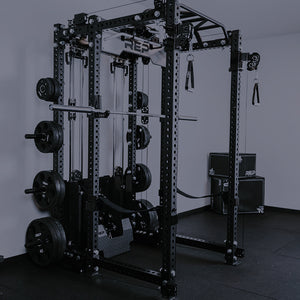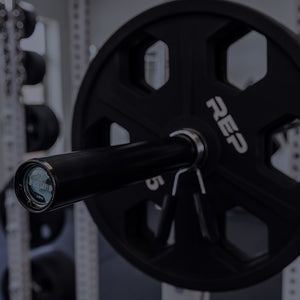
To run outside or not outside, that is the question.
Getting into fitness? Here’s the good news: You can go running just about anywhere. The bad news? You can go running just about anywhere. At a glance, it might seem like a paltry concern—running is running, no matter if it’s on a treadmill versus running outside, right?
Sort of. Any experienced runner will tell you that the surface you run on can be the difference between a breezy cardio workout and a session punctuated by shin splints and sore feet. Here’s what you need to know.
Running on Treadmill vs. Running Outside: What’s the Difference?
Treadmills often need to be kept inside because that’s where the electricity is. Unless you're working with one of the best manual treadmills like the Strive Series Curved Tread, which doesn't require electricity to work. Before we dive into questions like, “Is running on the treadmill easier?” (It isn’t, always), let’s set the table.
You don’t need to become a marathoner to get the benefits of running. Beyond the physical, treadmill and/or outdoor running can have a massive impact on mental health, improving mood and counteracting symptoms of depression, studies show.
Pros & Cons of Treadmill Running

If treadmills weren’t worth using, they wouldn’t take up space by the dozens in gyms all over the world.
On the surface, the treadmill seems like a masterstroke of human ingenuity; a solution to the very practical problem of living somewhere without a track, or sidewalks, or even paved roads. What’s more, they come in all shapes and sizes, from ergonomic manual treadmills (like the REP® Strive Series Curved Treadmill) to compact folding stations—heck, we can even include the walking pad you might have in your home office.
But the treadmill benefits aren’t infinite. There are also some drawbacks, both practical and physiological.
Pros
- One of the biggest advantages of running on treadmills is accessibility. You can find them in apartment gyms, hotel gyms, big chains, and they fit nicely in most garage gyms as well.
- Treadmills let you fine-tune everything about your performance, putting your pace on autopilot, making it easy to turn off your brain and just work. You can also choose to run on an incline, whereas outside you’re at the mercy of topography.
- Is it better to run outside or on a treadmill? Generally speaking and according to some literature, treadmill running is easier on your joints than running outside. The machine is built with human performance in mind, unlike outdoor surface streets designed for thousand-plus pound cars and trucks. There’s a bit more give to a treadmill, which reduces impact forces.
- The best treadmills come with amenities like fans, touch-screen interfaces, social media compatibility, games and music, and even virtual or AI coaches to help motivate you.
Cons
- Treadmills are machines, and machines break; you also need to share treadmills in a commercial gym with other patrons. If your favorite treadmill is occupied, you’re out of luck.
- Some runners struggle to stay motivated on treadmills because they’re not actually moving, which can be disheartening and cause time to feel like it’s moving more slowly than usual.
- Running prowess on a treadmill may not confer to outdoor settings, since you’re training in a static, optimized environment. Switching to pavement and trying to maintain your current workout, or immediately going for a personal record, is a recipe for pain or even injury.
Pros & Cons of Running Outside

Human beings are the most proficient endurance runners on planet Earth. From the savannah to the New York marathon, we’re built to conquer nature one step at a time. In that way, running outdoors is satisfying in a primal way—but it does have some drawbacks, too.
Pros
- Studies consistently show that immersing yourself in nature, especially when paired with physical activity, can do wonders for your mental health.
- Outdoor workouts help you get fresh air and sunlight, which ensures you hit your vitamin D quota—especially important in the winter.
- Running outdoors is a higher-impact activity than running on a treadmill, but the extra firmness to the ground also creates stronger muscle contractions and more force output.
- Outside running is a must-do if you’re seriously preparing for a competition like a marathon or 5K, which are almost always held outside. You must train in appreciably similar conditions as you intend to compete, especially as event day draws near.
- For most people, varied and dynamic outdoor environments help stave off boredom; something you can’t fully appreciate until you commit to hour-plus long runs.
Cons
- For better or worse, you’re at the mercy of the weather when you run outside. A beautiful sunny day might encourage you to hit the pavement hard. On the other hand, inclement weather can really rain on your parade.
- Running outdoors may not be practical for everyone. Rural areas with plenty of open space and low vehicle traffic are great, as are walkable cities designed with fitness in mind. Some places simply don’t have appropriate areas to run; safety, debris, excessive turns, or crowded sidewalks are all valid concerns.
- If you take running seriously, you’ll probably need to spend a bit more money for outdoor workouts. Training gear designed to combat the elements is a worthy, but pricy, investment. You’ll need water-resistant clothing and shoes, a hydration pack, sun protection… it adds up quick.
Running on a Treadmill vs. Outside: How to Choose
So, we’ve got our pros and cons. Here’s how to weigh them.
Beginners: Pick whichever is most accessible to you. One of the biggest barriers to entry for new exercisers is logistics; if you have to drive 15+ minutes to your gym just to get on the treadmill, you’re more likely to slack off after a long day at work.
Recreational trainees: Stick with the treadmill, for the most part. It’s easier on your joints, and you don’t have to worry about bad weather ruining a workout. That said, if you have a partner or friend, take things outdoors. It’s much more engaging than trying to talk to each other over the whirring and thumping of the treadmill.
Aspiring competitors: Mix it up. Use the treadmill to accumulate volume, then head outdoors and hit the pavement or a trail for some periodic high-intensity running that simulates what you’ll be doing on competition day.
Running Workouts to Try
Knowing where you want to run is only half the battle. Spoiler alert: You actually have to go do the work. If you’re not sure where to start, here are two great options for beginner running workouts on a treadmill or outside.
Treadmill HIIT
HIIT, or “high intensity interval training”, doesn’t necessarily mean sprinting as fast as you can. If you’re a beginner or don’t want to push your limits, you can hit a brisk jog and still reap the benefits of HIIT, as long as you’re spiking and calming your heart rate.
- 10-minute walk, gradually increasing in speed from 2.0 to 3.5.
- 15 seconds of running at a moderate pace.
- 1 minute of walking at a speed of 3.0 to 3.5.
- 30 seconds of running at a moderate to high pace.
- 1 minute of walking at a speed of 3.0 to 3.5
- 45 seconds of running at a moderate to high pace.
- 1 minute of walking at a speed of 3.0 to 3.5.
- 1 minute of running at a high pace.
- 3 minutes of walking at a recovery speed of 2.0 to 2.5.
Outdoor Hill Sprints
If you’re outdoors and have a long, sloped hill to work with, you can get a lot done in very little time. Here’s a super basic outdoor hill sprint workout for beginners and advanced runners alike:
- .5 to 1 mile of slow jogging to warm up.
- Long lunges up the hill to stretch your hips and groin, then walk back down.
- Sprint up the hill at roughly 90% top speed, rest at the top for 30 seconds, then walk back down.
Perform five rounds.
Takeaway
Treadmills are all well and good, and they’re fantastic for getting people of all demographics moving. That said, nothing beats a brisk run outdoors in good weather. Is running on the treadmill easier? It depends. Electric treadmills may make the work easier, while manual treadmills may make the work harder.
Running isn’t about showing off how hardcore you are—it’s about improving your fitness and doing so in a way that’s safe, sustainable, and hopefully at least a little bit fun. If you find that on the treadmill, rock on. If you prefer pounding the pavement, go for it.
Whether you prefer running workouts on the treadmill or outdoors, make sure you’ve taken the time to assess the pros and cons. After that, all you’ve got to do is lace up and get going.
FAQs
Why is running outside harder than treadmill running?
For most people, running outside is harder than on a standard treadmill you'd find in a commercial gym. Pavement causes higher impact forces on your joints, and you’re not in control of the slope of your running surface or what the weather will do. However, manual treadmills may feel more difficult than running outside, since you expend more energy to power the belt with your legs.
Is running on a treadmill bad for you?
No! Running on a treadmill provides you with (often times) lower joint impact, a controlled environment, customization to your speed and incline, as well as the convenience of tackling your workout whenever and however you want from the comfort of your home gym.
How long should I run on the treadmill?
If you’re new to working out, focus on getting up to a 20-to-30-minute unbroken jog on the treadmill. Once you can do that, you’re in great shape to dive into a more involved running workout plan.
How to start running outside?
If you're interested in trying your hand at outdoor running, make sure to set yourself up for success. Wear comfortable shoes, choose clothing and products—like sunscreen, reflective garments, a hat, sunglasses, and chafe cream—that'll protect you during your workout, map out your route, carry water, and let someone know where you're going.
Jake Dickson holds a B.S. degree in Exercise Science and is a NASM-CPT. As a health & wellness writer, Jake focuses on making fitness practical and accessible for any audience. Off the clock, you can find Jake at the gym or unwinding by the beach.
This article was reviewed by Rosie Borchert, NASM-CPT, for accuracy.
similar to this

NEWSLETTER SIGNUP
Product launch information, promotions, blogs, and REP news.







